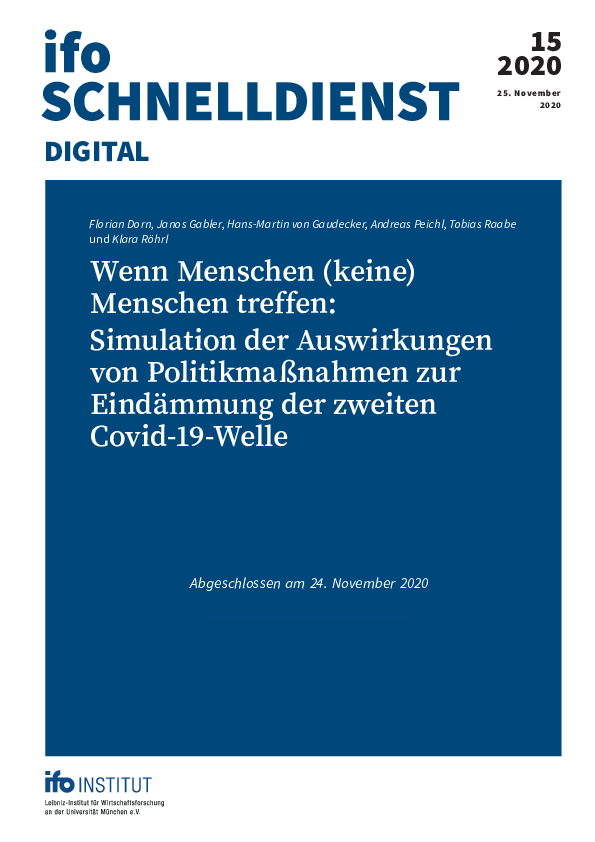When People Meet (No) People: A Simulation of the Effects of Policy Measures to Contain the Second Wave of Covid-19
ifo Institute, Munich, 2020
ifo Schnelldienst digital, 2020, 1, No. 15, 01-07

To break the second wave of coronavirus in the autumn, Germany imposed a “lockdown light” in November 2020. This was insufficient to meet the conditions set by politicians themselves for relaxing the measures, namely a coronavirus incidence value of less than 50. Policymakers must now weigh up how they want to reduce infections further in the coming weeks if they do not want to extend the lockdown into the spring. Using a newly developed micro-based model, we simulate the effect of various contact-reducing policy measures. Our results show that extending the current lockdown would reduce the number of new infections only very gradually in the coming weeks. By Christmas, the incidence value would not fall below 75 throughout Germany. To achieve a further reduction in incidence via contact restrictions, policymakers are discussing options ranging from tightening various restrictions at educational institutions or in the retail trade to wide-ranging restrictions on social contact and leaving the house. One option is introduce alternating classes or digital distance learning. Our analyses show that such a restriction of school operations might be sufficient to bring the 7-day incidence value below 50 by Christmas. However, there is a risk of high educational costs for students whose schools do not have the necessary digital infrastructure and concepts for homeschooling. These could greatly damage Germany in the long term. However, it is possible to bring the 7-day incidence value below 50 by Christmas even with normal school operations: the simulations show that closing and restricting further economic and business activities while keeping schools open would have the same effect as the additional closure of schools while extending the “lockdown light.” So if the incidence of infection is to be reduced more strongly, there is a need to weigh up which kind of damage should be classified as greater in economic and social terms: the long-term damage caused by restrictions in schools or the short-term damage caused by closing further economic sectors.